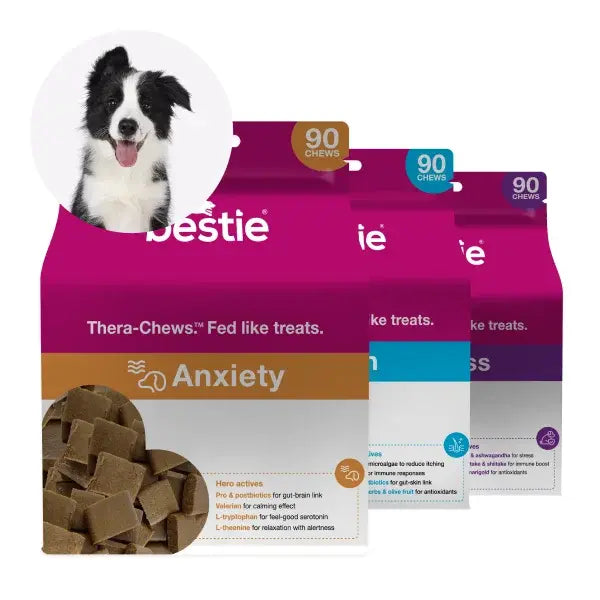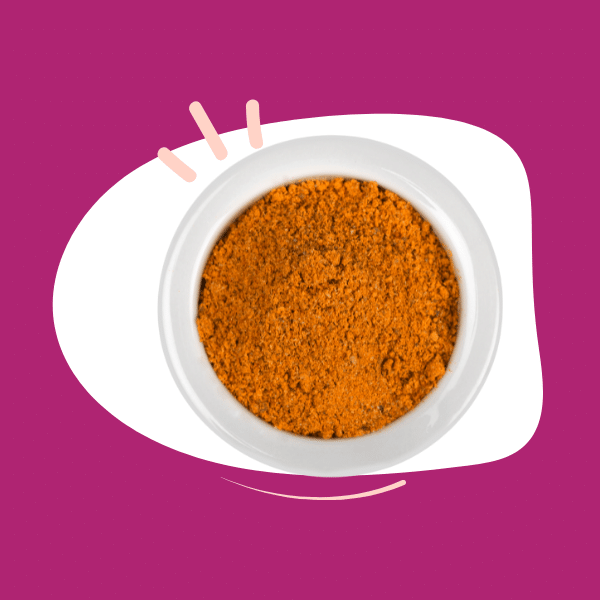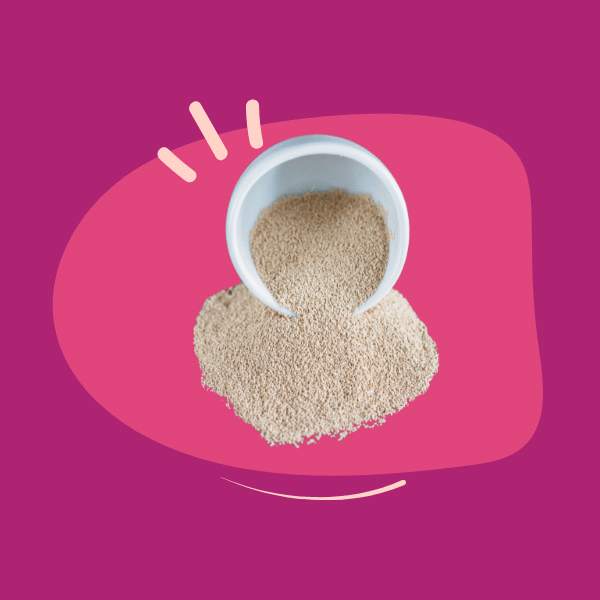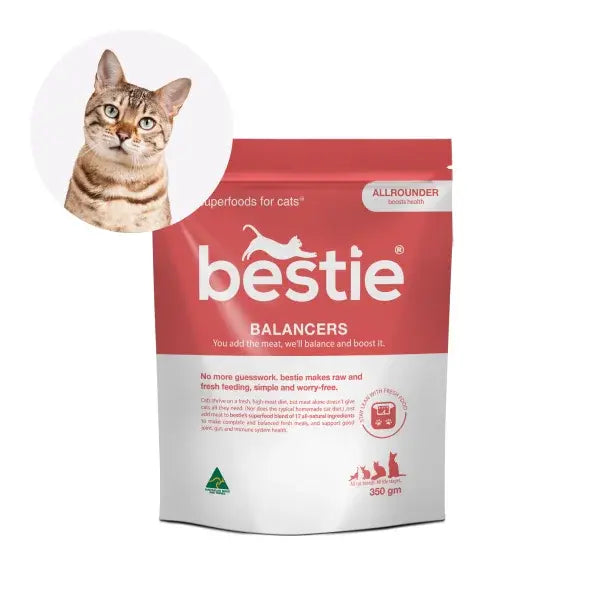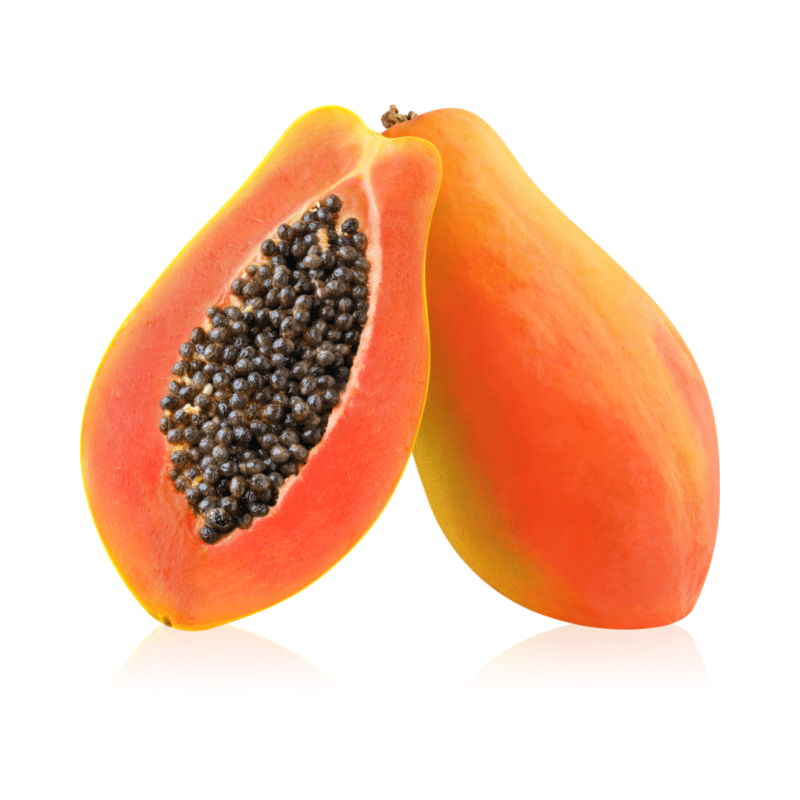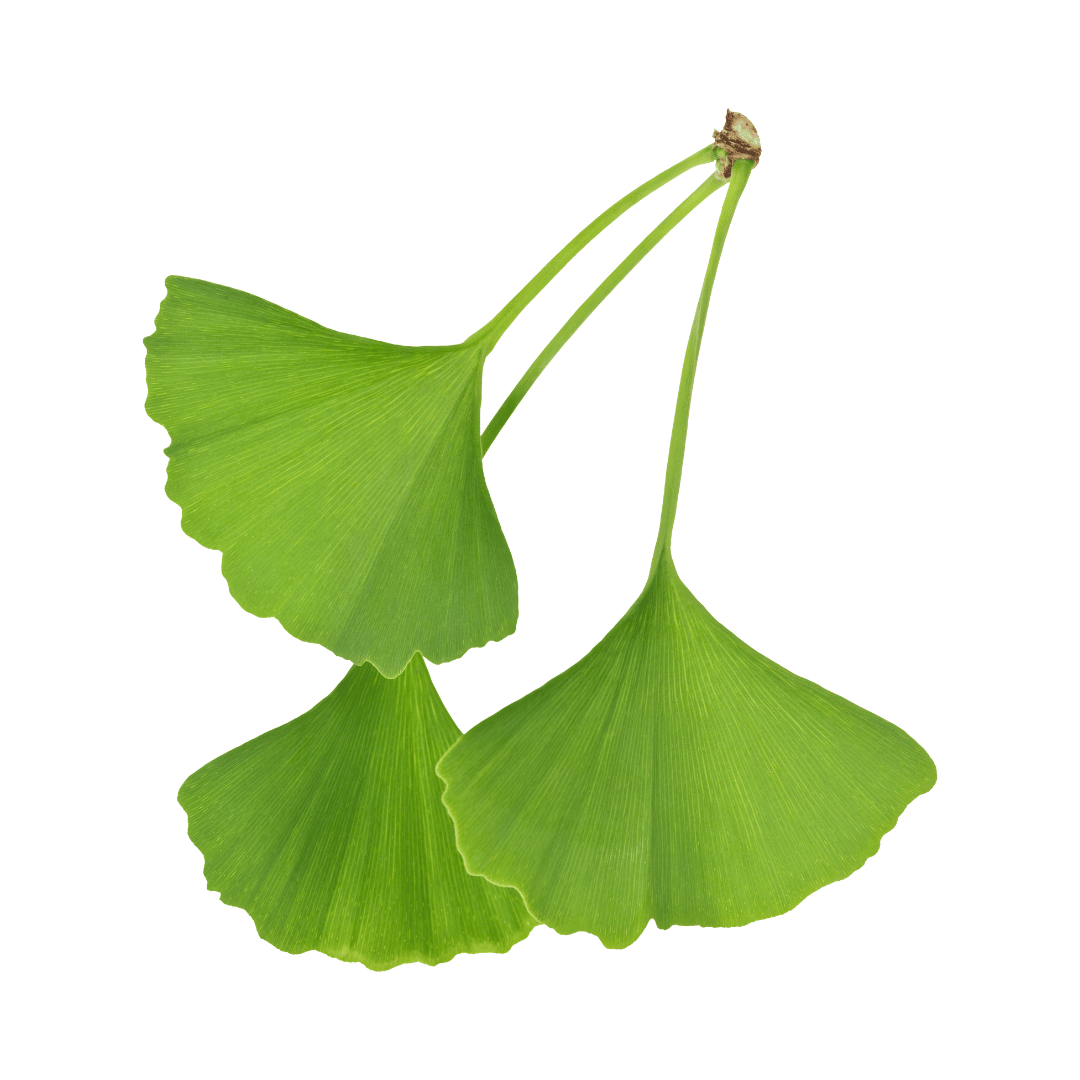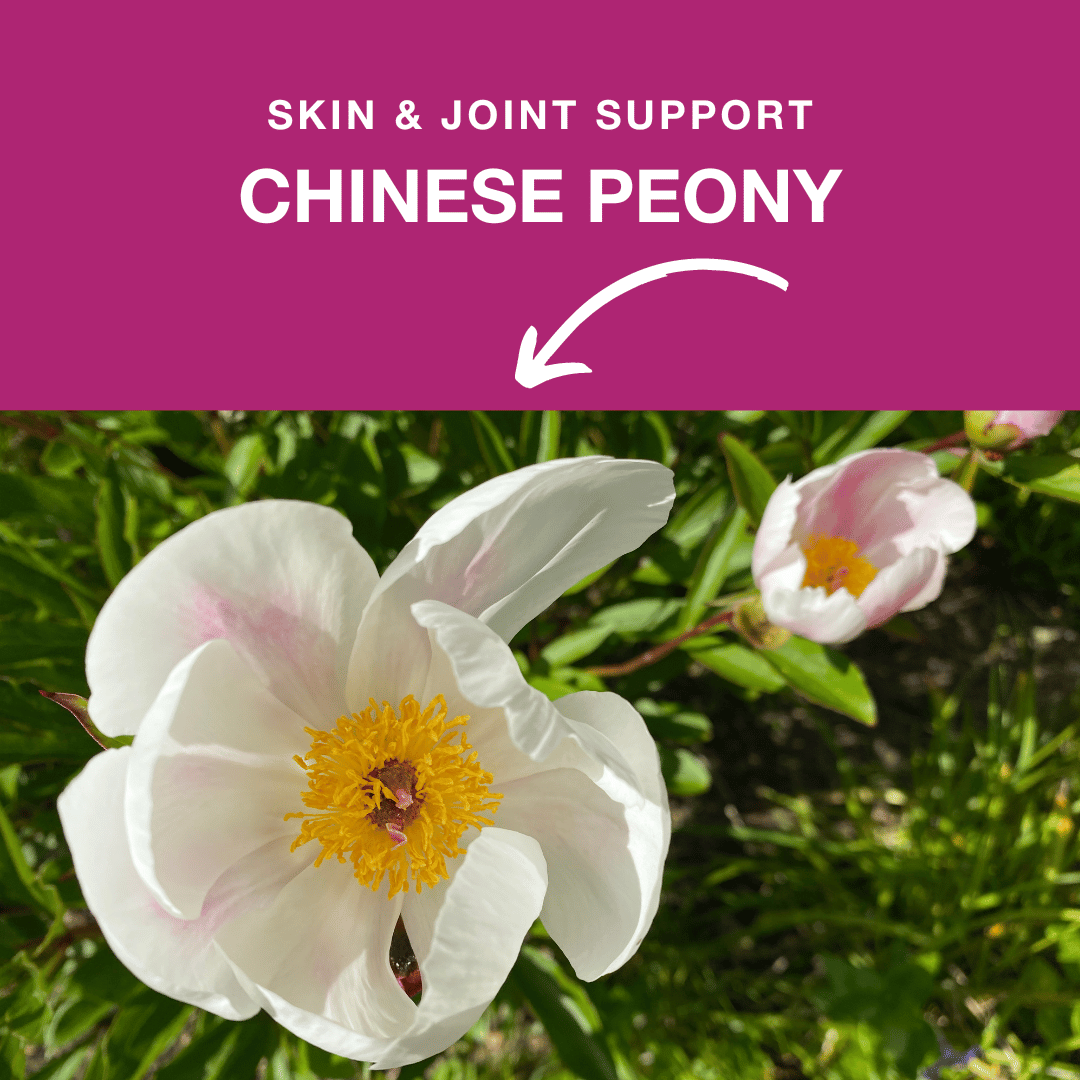In a nutshell:
-
The trend toward natural, organic pet food and supplements has fueled the need for natural ingredients and superfoods that offer both medical and nutritional benefits to pets.
-
Many scientific studies have demonstrated the immune-boosting, anti-inflammatory activity, and disease-fighting properties of papaya.
-
Papaya is a major ingredient in the bestie Stress health chew, designed to provide support to a struggling immune system
Carica papaya L., commonly known as papaya or pawpaw, is a herbaceous tropical plant that belongs to the Caricaceae family. Papaya (known in Ayurveda as Erand-karkati) is also well known for its medicinal properties1.
The phytonutrients in papaya have important benefits particularly in health and medicine not only in humans but also in pets. Phytonutrients, also called phytochemicals, are natural compounds produced by plants to help protect against pathogens (bacteria, fungi, and virus) and other potential threats, such as insects. There are more than 25,000 phytonutrients in plants. The most popular of these are carotenoids, flavonoids, resveratrol, ellagic acid, glucosinolates, and phytoestrogens. 2
Many scientific studies have been able to consistently demonstrate the immune-boosting, anti-inflammatory activity, and disease-fighting properties of papaya. That’s a key reason why papaya is a major ingredient in the bestie Stress health chew, designed to provide support to a struggling immune system.
Papaya’s antioxidant properties support the health and function of various systems of the body including the digestive tract, cardiovascular , nervous, and immune systems. The papaya plant has radical scavenging activity, enhances immune response, and reduces oxidative damage.3Because of the various health benefits of papaya, many people call it the ‘nutraceutical plant’.
The papaya’s ability to reduce oxidative stress in the body has also made it a potentially important factor in the prevention or alleviation of medical problems that are fueled by free radicals and oxidative stress, such as diabetes mellitus, cognitive dysfunction (Alzheimer’s disease), and even cancer.
Anti-Inflammatory, Anti-Oxidant, And Immunomodulatory Properties Of Papaya
Many studies, both performed in vitro (in the laboratory) and in vivo (in humans and animals), have been able to demonstrate the various mechanisms by which different parts of the papaya plant exert significant anti-inflammatory and immunomodulatory properties. The results of these scientific investigations revealed the papaya’s favorable effects on immunological, hematological, inflammatory, and oxidative stress parameters in chronic/degenerative diseases.4
Papaya Can Help Combat Free Radicals
One of the by-products that are created by the various metabolic processes of the body are free radicals. Free radicals induce oxidative stress, which is balanced by the body's endogenous antioxidant systems with an input from co-factors, and by the ingestion of exogenous antioxidants.5Free radicals in the body has been linked to the development of many medical conditions, some of which can be serious and life-threatening. The first line of defense from the damaging effects of free radicals is antioxidants, which convert the oxidants to less reactive species.
The flavonoids and phenolic acids in papaya leaf and fruit are the main suppressors of free radicals.6
Nutritional Composition Of Papaya
High amounts of natural antioxidants can be found in the leaves, fruits, seeds, and latex of the papaya. It contains various chemical compounds, called phytonutrients or phytochemicals, that demonstrate significant antioxidant properties including caffeic acid, myricetin, rutin, quercetin, α-tocopherol, papain, benzyl isothiocyanate (BiTC), and kaempferol.3
Papaya Fruit
The fruit has a juicy taste and is rich in antioxidant nutrients like carotene, vitamin C, vitamin B, flavonoids, folate, pantothenic acids and minerals such as potassium and magnesium; the papaya fruit is also a good source of fibre, all these are reported to promote the functions of cardiovascular system and provide protection against colon cancer.7
The flesh and peel of the papaya fruit is an important dietary source of β-carotene and lycopene. Compared to carrots and tomatoes, which also contain both of these carotenoids, the bioavailability of β-carotene from papayas was approximately three times higher.8
Carotenoids are known for their pro-vitamin A and antioxidant properties. Pro-vitamin A is a compound that can be converted into vitamin A in the body. A common example of provitamin A, is beta-carotene which is found in substantial quantities in papaya and other orange and yellow fruits and vegetables.
Papaya Leaves
The ethanolic extracts of the papaya leaves have antioxidant properties and has been used to treat malaria.9It contains phytochemicals, such as flavonoids, terpenoids, saponins, tannins, anthraquinone, alkaloids, and cardiac glycosides. The antioxidant activities of papaya has been compared to that of vitamin C.
Enzymes in Papaya
Papain and chymopapain are enzymes that help break down and digest protein. They are most abundant in the latex of an unripe papaya fruit. These enzymes are also present in smaller quantities in the leaves and fruit. Papain works just like the human digestive enzyme pepsin. It helps break down proteins during digestion. It is a popular ingredient in meat tenderizer.
In addition to its relevance to the food industry, papain is used in the pharmaceutical industry for medicines, such as in preparation of vaccines, or for the treatment of hard skin. Papain also has veterinary applications such as in the de-worming of cattle.10
These proteolytic enzymes in the papaya also possess immunomodulatory and anti-inflammatory activities. 11
Here are important medical conditions in which the papaya has been found to offer valuable medical benefits:
Joint Pains
In vitro studies indicated that papaya extracts (leaf and seed) possess an ability to modulate inflammatory markers in various cell types exposed to a variety of stressors.12Papaya leaf extract have been able to significantly reduce paw oedema in rats with arthritis.13The anti-inflammatory effects of papaya can help pets suffering from arthritis and other joint problems.
Cognitive Dysfunction (Alzheimer’s Disease)
The induction and progression of Alzheimer’s disease is fueled by oxidative stress. Papaya extract significantly decreased oxidative stress in Alzheimer’s disease patients .14 This could be helpful in preventing or alleviating age-related cognitive decline in cats and dogs.
Periodontal Disease
Infections of the tissues that support the teeth (periodontal disease) is closely related to oxidative stress. Carica papaya leaf extract significantly alleviated gingival bleeding and inflammation. It can also prevent infection at the periodontal sites.15
Wound Healing
The wound healing process can be negatively affected by the presence of oxidative stress. Excessive radicals at the wound site kill cells and can severely damage the tissue and promote inflammation.16 While inflammation is important to prevent infection and stimulate wound healing during the early stages, excessive or prolonged inflammation can delay wound healing and scar formation. Studies on the wound healing effects of papaya have shown a significant acceleration in the wound healing process. 17,18
Anti-Aging
Papaya promotes collagen synthesis. This, together with its radical-conquering mechanisms make it potentially effective against skin aging and improving skin health. 19 In fact, the result of one study demonstrated papaya’s superior anti-aging effects over antioxidant cocktails.20
Cancer
The phytochemicals in papaya has been found to have chemopreventive properties which include activating tumour-suppressive genes and other anti-cancer mechanisms. 21
‘Anti-Diabetes’
As an antioxidant, papaya also has anti-diabetic properties and showed protective effects against complications associated with diabetes. The mechanisms by which papaya exerts its effects in organs and tissues that are directly and indirectly involved in the development of diabetes, significantly delayed or prevented the progression to diabetic complications, such as neuropathy and nephropathy.22
References:
- Khare CP, editor. 2004. Indian herbal remedies. Heidelberg: Springer. p. 115–181.
- Phytonutrients (n.d.) https://www.webmd.com/diet/guide/phytonutrients-faq#1
- Kong, et al. 2021. Beneficial Role of Carica papaya Extracts and Phytochemicals on Oxidative Stress and Related Diseases: A Mini Review
- Mario Barbagallo, Francesco Marotta, Ligia J Dominguez. 2015. Oxidative stress in patients with Alzheimer's disease: effect of extracts of fermented papaya powder.
- Khalid Rahman. 2007. Studies on free radicals, antioxidants, and co-factors.
- Seo S.A., Ngo H.T.T., Hwang E., Park B., Yi T.-H. Protective effects of Carica papayaleaf against skin photodamage by blocking production of matrix metalloproteinases and collagen degradation in UVB-irradiated normal human dermal fibroblasts. Afr. J. Bot.2020;131:398–405. doi: 10.1016/j.sajb.2020.03.019.
- Fischer N. Flavour components in selected Exotic Fruits. Food Australia. 1998;50:165–168.
- Ralf M Schweiggert, Rachel E Kopec, Maria G Villalobos-Gutierrez, Josef Högel, Silvia Quesada, Patricia Esquivel, Steven J Schwartz, Reinhold Carle. 2014. Carotenoids are more bioavailable from papaya than from tomato and carrot in humans: a randomised cross-over study.
- Ayoola, G. A., et al. September 2008. Phytochemical Screening and Antioxidant Activities of Some Selected Medicinal Plants Used for Malaria Therapy in Southwestern Nigeria. Tropical Journal of Pharmaceutical Research
- Papain Production. The Schumacher Centre, Rugby, Warwickshire, CV23 9QZ, United Kingdom.
- Rakhimov MR. 2001. Anti-inflammatory activity of domestic papain. Eksp Klin Farmakol. 64:48–49
- Bertrand S, Donatella F, Rita C, Carla M, Giancarlo F, Vittorio C. 2014. Anti-oxidant and anti-inflammatory activities of extracts from Cassia alata, Eleusine indica, Eremomastax speciosa, Carica papaya, and Polyscias fulva medicinal plants collected in Cameroon. PLoS One 9:e103999.
- Pandey, S, Cabot P, Shaw N, Hewavitharana, A. 2015. Anti-inflammatory and immunomodulatory properties of Carica papaya
- Barbagallo M., Marotta F., Dominguez L.J. Oxidative stress in patients with Alzheimer’s disease: Effect of extracts of fermented papaya powder. Inflamm.2015;2015:624801. doi: 10.1155/2015/624801.
- Saliasi I., Llodra J.C., Bravo M., Tramini P., Dussart C., Viennot S., Carrouel F. Effect of a Toothpaste/Mouthwash Containing Carica papayaLeaf Extract on Interdental Gingival Bleeding: A Randomized Controlled Trial. J. Environ. Res. Public Health.2018;15:2660. doi: 10.3390/ijerph15122660.
- Gonzalez A.C., Costa T.F., Andrade Z.A., Medrado A.R. Wound healing—A literature review. Dermatol. 2016;91:614–620. doi: 10.1590/abd1806-4841.20164741.
- Nafiu A.B., Rahman M.T. Anti-inflammatory and antioxidant properties of unripe papaya extract in an excision wound model. Pharm. Biol. 2015;53:662–671. doi: 10.3109/13880209.2014.936470.
- Nafiu A.B., Rahman M.T. Anti-inflammatory and antioxidant properties of unripe papaya extract in an excision wound model. Biol. 2015;53:662–671. doi: 10.3109/13880209.2014.936470
- Seo S.A., Ngo H.T.T., Hwang E., Park B., Yi T.-H. Protective effects of Carica papaya leaf against skin photodamage by blocking production of matrix metalloproteinases and collagen degradation in UVB-irradiated normal human dermal fibroblasts. Afr. J. Bot. 2020;131:398–405. doi: 10.1016/j.sajb.2020.03.019.
- Jarisarapurin W., Sanrattana W., Chularojmontri L., Kunchana K., Wattanapitayakul S. Antioxidant Properties of Unripe Carica papaya Fruit Extract and Its Protective Effects against Endothelial Oxidative Stress. Evid. Based Complement. Med. 2019;2019:4912631. doi: 10.1155/2019/4912631
- Murakami S., Eikawa S., Kaya S., Imao M., Aji T. AntiTumor and Immunoregulatory Effects of Fermented Papaya Preparation (FPP: SAIDOPS501) Asian Pac. J. Cancer Prev. 2016;17:3077–3084.
- Somanah J., Aruoma O.I., Gunness T.K., Kowelssur S., Dambala V., Murad F., Googoolye K., Daus D., Indelicato J., Bourdon E., et al. Effects of a short term supplementation of a fermented papaya preparation on biomarkers of diabetes mellitus in a randomized Mauritian population. Med.2012;54:S90–S97. doi: 10.1016/j.ypmed.2012.01.014.



